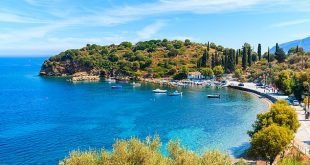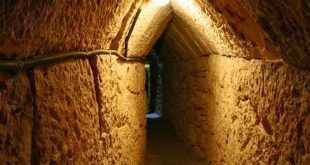In Samos, during the years of tyrant Polycrates, lived many men and women who distinguished themselves in sciences, arts, literature, and philosophy.
Among them, a special place should be reserved for the philosopher, mathematician, and musician Pythagoras (born 570 BC), the son of Mnisiarchos and Parthenia (or Pyleidas). He was named Pythagoras because Pythia of the Delphi Oracle foretold his birth. His rich father was able to offer young Pythagoras higher education, while he made sure that his son would learn the arts of painting, music, and stone carving.
At the age of 18 he became student of Thales of Miletus and of Via in Pritini, two out of the seven sages of ancient Greece. Anaximander and the poet Theogis were also his tutors. His love for knowledge made him visit almost all spiritual and cultural centers of his time. He went to Sidon where he met with the priests of the temple at Mount Carmel (Northern Israel). Then he visited Egypt, where, for 22 years, studied the Egyptian sages and their mysteries. Heading for Chaldea, he was captured by the Persian King Cambyses II. In Persia he learned the secrets and the art of magic by Persian magicians and astrologers. Eventually, he was released, returned to Samos, and he founded a Philosophical School where he tried to apply what he had learn during his travels, in the fields of arithmetic, geometry, astronomy, and music.
However, his teachings, about freedom and respect towards other people, were contrary to the tyranny of Polycrates and, thus, he was considered dangerous. At that time, Polycrates, used to exile the most dangerous aristocrats and nobles, while he tried to eliminate all those who didn’t compromised with his regime. Among them was Pythagoras, who, once informed, by a friend of his, that Polycrates will attempt to have him murdered, left the city in secret and took refuge in a cave.
Tourists and visitors, walking the slopes of Mountain Kerkis, from the Marathokabos Town side, can see the “Cave of Pythagoras”, which is preserved to this day. Finally, Pythagoras managed to leave Samos safely, by boat and in secret, and found refuge in the prestigious city of Croton in Southern Italy. In the southern part of the Italian Peninsular, Greek city-states, collectively known as “Great Greece”, flourishing and were well known in antiquity for their level of civilization and virtue.
Throughout the rest of his life, Pythagoras never returned to Samos. He died, an old man, in Southern Italy, but his name made Samos famous worldwide. By his marriage to Theano, four boys (Arimnitos, Mnisiarchus, Telauges and Marmakos) and four girls were born. Three of his boys, except Arimnitos, along with his sister Damo and their mother, returned to Samos, where they died.
Croton became the base of Pythagoras reform movement, which sought the purification of the religious and political life. The famous School of Pythagoreans sought the moral and spiritual rebirth of the masses, men and women alike, based on the concepts of numbers, measures, and harmony. Every night, before sleep, his students used to ask themselves:
– What did you do today?
– What I didn’t do today?
– What should I have done and I didn’t?
Except the teachings of Pythagoras, his students became familiar with the teachings of Theloumytis and Pylegoras. It would be a great remiss if we don’t mention the famous “Pythagorean Theorem”: The square of the hypotenuse (the side opposite a right angle) is equal to the sum of the squares of the other two sides (α2 = β2 + γ2). It is rumored that he killed 100 oxen in order to prove his theorem (an action called “Ekatolivi”). Today, in Pythagorion Port, his statue stands inside a right triangle.
 iSamos.gr Η ενημερωτική σελίδα της Σάμου! Εξερευνήστε τη Σάμο, τις παραλίες της, τη φύση της, τις ομορφιές της. Διαβάστε την ιστορία της Σάμου
iSamos.gr Η ενημερωτική σελίδα της Σάμου! Εξερευνήστε τη Σάμο, τις παραλίες της, τη φύση της, τις ομορφιές της. Διαβάστε την ιστορία της Σάμου






